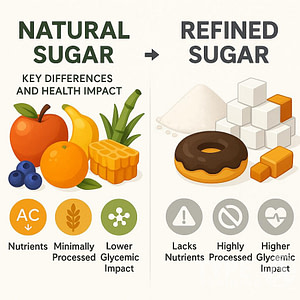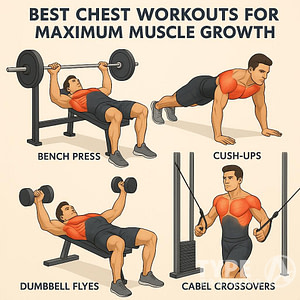Ever wondered if the keto diet could be the key to your weight loss goals? The ketogenic diet is a low-carb, high-fat eating pattern that helps burn fat for energy, making it a powerful tool for weight loss. By restricting carbohydrates, you force your body to enter a state called ketosis, where it burns fat instead of glucose for fuel.
As you begin your journey on the keto diet, you’ll notice significant changes in your body, especially in the first week. On average, most people experience rapid weight loss initially due to both fat and water loss. This helps boost your confidence and encourages you to stick with the diet.
To make your keto journey smooth, it’s essential to know what foods to eat and avoid. Popular choices include fatty fish, avocados, and cheese, while you should steer clear of high-carb foods like bread and sugary snacks. Check out detailed guides and meal plans to ensure you’re on the right track, which can be found on resources like Healthline. Stick with it, and you’ll likely see impressive results in your weight loss journey.
Popular posts:
Understanding the Keto Diet
The ketogenic diet revolves around drastically reducing carbohydrate intake and replacing it with fat to enter a state of ketosis, where your body burns fat for fuel instead of carbohydrates.
Basics of Ketogenic Diet
A ketogenic diet, often referred to as keto, is characterized by a low carb, high fat intake. Typically, your daily calories come from around 70-75% fat, 20% protein, and only 5-10% carbohydrates. This substantial reduction in carbs puts your body into a metabolic state called ketosis.
During ketosis, your liver converts fats into molecules called ketones, which serve as an alternative energy source. Foods commonly included in a keto diet are meats, fatty fish, eggs, butter, nuts, and high-fat dairy. Avoid grains, sugars, and starchy vegetables.
How Ketosis Works
Ketosis is the metabolic process your body enters when it lacks enough carbohydrates to burn for energy. With very low carb intake, your body switches from using glucose as its primary energy source to burning fat. The liver begins to produce ketones from fat, which then take over as the main energy source.
To enter ketosis, you generally need to consume fewer than 50 grams of carbs per day. Ketones help maintain energy levels and can also contribute to improved mental clarity and focus. Monitoring ketone levels can help ensure you remain in this fat-burning state, optimizing weight loss and other potential health benefits.
Benefits of Keto for Weight Loss
The ketogenic diet offers several notable advantages for those aiming to lose weight. Two primary benefits include the promotion of fat burning through ketosis and the reduction in appetite, which can lead to a lower calorie intake.
Fat Burning and Ketosis
On a ketogenic diet, your body enters a state known as ketosis. In ketosis, the body burns fat for fuel instead of carbohydrates. This shift allows for efficient fat loss as the body’s primary source of energy becomes stored fat.
The production of ketones in the liver is a crucial part of this process. Ketones supply energy to your brain and other organs, making ketosis a sustainable state. This metabolic switch reduces reliance on glucose, which can lead to decreased body fat over time.
Studies have shown that low carbohydrate, high-fat diets like keto can be very effective for weight loss and metabolic health. For example, a keto diet has been linked to improvements in type 2 diabetes and metabolic syndrome, conditions often associated with excess body fat.
Appetite Suppression and Caloric Deficit
Another significant benefit of the ketogenic diet is its ability to suppress appetite. Many individuals report feeling fuller on a keto diet, which can help naturally reduce calorie intake.
High-fat foods are more satiating than high-carb foods, and this can lead to reduced overall food consumption. The consumption of more protein and fat helps maintain a sense of fullness and satisfaction after meals.
The keto diet’s impact on appetite can make it easier to maintain a caloric deficit, which is essential for weight loss. By consuming fewer calories than you burn, you create the necessary conditions for your body to tap into fat stores for energy.
Nutritional Components of a Keto Diet
A keto diet primarily focuses on high-fat intake while considerably limiting carbohydrates and maintaining adequate protein consumption. Essential nutrients like fiber, vitamins, and minerals also play pivotal roles in balancing the diet.
Macronutrients in Focus
In a keto diet, macros are skewed towards high fat, moderate protein, and low carbohydrate consumption. Typically, you aim for about 70-75% of calories from fats, 20-25% from protein, and 5-10% from carbs.
Fats are the cornerstone, providing a dense energy source. Healthy options include avocados, nuts, seeds, and olive oil. Saturated fat from sources like butter and coconut oil can also be part of this regimen but should be consumed mindfully.
Protein intake is moderate and comes from meat, fish, eggs, and some plant sources like tofu and tempeh. It’s crucial to maintain adequate protein to support muscle mass and overall health without kicking the body out of ketosis.
Fiber, though not a primary focus, is important for digestive health and can be obtained from non-starchy vegetables like spinach and broccoli.
Key Vitamins and Minerals
Due to restrictive food choices, a keto diet can lead to deficiencies in essential vitamins and minerals. Ensuring adequate intake of these nutrients is crucial.
Magnesium is vital for muscle function and electrolyte balance. High-magnesium foods include pumpkin seeds, almonds, and spinach. Electrolyte supplements might also be necessary.
Potassium supports cardiovascular health and can be sourced from avocados, leafy greens, and salmon. Calcium is another key mineral, especially for bone health, often derived from dairy products and fortified non-dairy milks.
Vitamin D is important for calcium absorption and is found in fatty fish, egg yolks, and supplements if dietary intake is insufficient. To cover fiber, include vegetables like zucchini, bell peppers, and kale to help maintain digestive health and prevent common keto-related digestive issues.
By paying close attention to these macronutrients and essential vitamins and minerals, you can adhere to a balanced and effective ketogenic diet.
Designing a Keto Meal Plan
Creating a keto meal plan involves selecting foods that are low in carbs, high in healthy fats, and moderate in protein. Choosing the right snacks and beverages is also crucial for maintaining ketosis and staying satisfied throughout the day.
Foods to Include and Avoid
When planning your keto diet, focus on low-carb vegetables such as leafy greens, cauliflower, and zucchini. Healthy fats like avocados, olive oil, and coconut oil are essential. Include moderate amounts of protein from sources like chicken, beef, and fish.
Avoid high-carb foods such as bread, pasta, and sugary snacks. Potatoes, rice, and most fruits are also off-limits as they can quickly increase your carb intake.
To aid your meal planning:
- Include: eggs, cheese, nuts, seeds
- Avoid: grains, legumes, starchy vegetables
Sample Keto Meal Planning
Breakfasts might include options like keto egg casserole or a keto breakfast wrap. Lunch and dinner could feature dishes like avocado bacon chicken bun-less burgers or weeknight keto chili bake.
Here’s a simple sample day:
- Breakfast: Keto mug muffin with cream cheese
- Lunch: Grilled chicken salad with olive oil dressing
- Dinner: Pan-seared salmon with asparagus
Utilize a 14-day keto meal plan to keep you on track with shopping lists and recipe suggestions.
Keto Snacks and Beverages
For snacks, opt for nuts, seeds, or cheese to maintain your fat intake. Keto-friendly beverage options include water, tea, and coffee without added sugar.
Consider these snack ideas:
- Nuts and seeds mix
- Cheese sticks
- Avocado slices with sea salt
Stay hydrated with plenty of water, and enjoy tea and coffee with heavy cream or unsweetened almond milk for added fat.
For more structured options and convenience, visit the 14-day keto meal plan for comprehensive guidance.
Fitness and Muscle Maintenance
Maintaining muscle mass while on a ketogenic diet requires a specific approach to exercise and nutrition. Critical points include adapting your workouts for muscle preservation and ensuring adequate protein intake.
Exercise on a Keto Diet
Exercise is crucial for preserving muscle mass and promoting fat burning on a keto diet. Focusing on resistance training helps stimulate muscle growth and strength. Activities like weight lifting, bodyweight exercises, and resistance bands are effective.
High-intensity interval training (HIIT) can also be beneficial. This combines short bursts of intense activity with periods of rest, maximizing fat burning while retaining muscle. Ensure you stay hydrated and consider electrolyte supplements to avoid cramps and fatigue.
Regular, moderate cardio can complement your resistance training. Activities like brisk walking, cycling, or swimming help maintain overall fitness without compromising muscle mass.
Preserving Lean Muscle Mass
To maintain muscle mass, monitor your protein intake closely. Aim for about 0.8-1.2 grams of protein per pound of lean body mass. High-quality proteins, such as lean meats, fish, eggs, and low-carb protein powders, are essential.
Balancing your macronutrients is important. While fats are the main energy source on keto, proper protein levels prevent muscle breakdown. Make sure fats make up the majority of your caloric intake but avoid compromising on protein needs.
Tracking progress with body measurements or bioelectrical impedance scales can help you adjust your diet and exercise plan effectively. Prioritize sleep and recovery periods, as muscles repair and grow during rest.
Keto Lifestyle Tips and Tricks
Adopting a keto lifestyle goes beyond just diet changes; it also involves practical strategies for social settings, managing cravings, and ensuring the long-term sustainability of your new eating habits.
Navigating Social Situations
Social events often pose challenges to maintaining your keto diet. Before attending, consider eating a keto-friendly snack to prevent hunger. Focus on choosing low-carb options available, such as meats, cheeses, and salads. Be prepared to turn down high-carb temptations and politely explain your dietary choices if necessary. Bringing a keto-friendly dish to share can also help.
Managing Cravings and Temptations
Managing cravings effectively is crucial for keto success. Reduce cravings by including high-fat snacks like avocados, nuts, or cheese in your meal plan. Remove high-carb foods such as bread, pasta, and sugary drinks from your home to minimize temptation. Staying hydrated and consuming enough electrolytes can also curb sugar cravings (keto diet tips for beginners).
Keto Diet Sustainability
For long-term success, focus on making the keto diet sustainable. Create diverse meal plans to keep meals interesting and enjoyable. Prioritize shopping for high-quality ingredients such as fresh vegetables, meats, and healthy fats. Integrate regular exercise and an active lifestyle to complement your dietary efforts (keto tips to get started). Embrace flexibility and understand that occasional slips are part of the journey.
Advanced Keto Strategies
Implementing advanced strategies like intermittent fasting and cyclical keto can enhance your ketogenic diet’s effectiveness. These methods can improve fat loss, boost ketone production, and provide flexibility in your eating habits.
Intermittent Fasting and Keto
Combining intermittent fasting with a keto diet can significantly speed up fat burning and ketone production. Methods like OMAD (one meal a day) or the 16/8 protocol, where you fast for 16 hours and eat within an 8-hour window, are popular choices.
Fasting reduces your eating window, which helps in maintaining low insulin levels. With fewer carb intakes, your body shifts to burning fat more efficiently.
This combination also promotes autophagy, the body’s way of cleaning out damaged cells, which can have additional health benefits. If you consider this approach, monitor your macros closely to ensure you get enough fats and proteins.
Cyclical and Targeted Keto
Cyclical Keto involves alternating periods of ketogenic eating with higher-carb refeeding days. Typically, practitioners follow a keto diet for 5-6 days, then increase carb intake for 1-2 days. This approach can help sustain energy levels and accommodate intense physical activity.
Targeted Keto is another variation where you consume carbs around your workout times. By synchronizing carb intake with exercise, you provide your muscles with immediate energy while staying in ketosis for the rest of the day.
These strategies require careful planning and tracking to maintain ketosis. Understanding your body’s response to different macros will help optimize performance and results with these advanced methods. For more detailed guidance, explore resources on cyclical keto and targeted keto diets from reputable sources.
Frequently Asked Questions
Explore common concerns about accelerating weight loss on keto, potential side effects, benefits and drawbacks, expected initial weight loss, long-term safety, and targeting belly fat.
How can I speed up my weight loss on keto?
To accelerate weight loss on keto, monitor your carb intake closely, ensuring you stay within the 20-50 grams per day range. Focus on consuming high-quality fats and moderate protein. Regular exercise, especially strength training and HIIT, can further boost your weight loss.
What are the potential side effects of a keto diet?
The initial phase may cause “keto flu,” with symptoms like headaches, fatigue, and nausea. Long-term effects include nutrient deficiencies, elevated cholesterol levels, and digestive issues. Stay hydrated and ensure adequate intake of electrolytes such as sodium, potassium, and magnesium to mitigate these effects.
What are the advantages and disadvantages of a keto diet?
Advantages include rapid weight loss, reduced blood sugar levels, and improved mental focus. Disadvantages can involve difficult initial adjustments, potential nutrient deficiencies, and long-term sustainability challenges. Ensuring you have a balanced approach can help optimize the benefits while minimizing the drawbacks.
What is the average weight loss experienced in the first month of following a keto diet?
In the first month, many people experience rapid weight loss, often ranging from 10 to 15 pounds. This is partly due to the loss of water weight as glycogen stores deplete. As the body adapts, the rate of weight loss may slow but continue steadily.
Is a keto diet a safe long-term dietary choice?
Long-term safety of a keto diet depends on individual health conditions and nutrient management. For specific conditions such as diabetes and epilepsy, doctors often recommend it. Discuss with a healthcare provider to tailor the diet to your needs and monitor health markers regularly.
Can a keto diet specifically target belly fat reduction?
A keto diet may help reduce belly fat due to its focus on fat burning and metabolic efficiency. While spot reduction isn’t possible, ketosis can lead to overall body fat loss, including visceral fat around the abdomen. Combining the diet with targeted exercises can enhance results.














